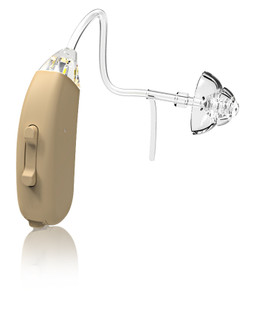Navigating the World of Hearing Aid Technology: A Comprehensive Guide
Posted by DR Paul on Oct 18, 2023
Hearing loss is a common affliction among millions of people around the world. Fortunately, with technology advancements, hearing aids have come a long way. From wireless remotes and noise reduction features to smartphone compatibility and rechargeability, hearing aid technology has been revolutionized in the past years.
However, with all the technical jargon, it can be overwhelming to navigate the world of hearing aid technology. In this comprehensive guide, we will break down everything you need to know about the different hearing aid types, features, and maintenance.
Types of Hearing Aids
Choosing the right type of hearing aid is crucial for people with Hearing loss. There are different types of hearing aids such as Behind-the-ear (BTE), In-the-ear (ITE), Receiver-in-canal (RIC), and Completely-in-canal (CIC). BTE is the most popular type of hearing aid. It has all the components in a case that rests behind the ear. RIC and ITE hearing aids are smaller than BTE. CIC hearing aids are the tiniest, and they fit entirely inside the ear canal.
Features of Hearing Aids
Technological advancements have led to an array of advanced hearing aid features. Some of these features include noise reduction, telecoil, and directional microphones. Noise reduction feature helps to reduce background noise. Directional microphones help to amplify sounds from a specific direction. Telecoil features allow hearing aids to pick up telecoil signals in public places or areas equipped with hearing loops.
Smartphone-Compatibility Hearing Aids
For users who prefer more hands-on control, hearing aids control and management via smartphones have become more popular in recent years. Smartphone compatibility features enable you to use your hearing aids as wireless earphones while listening to music, making phone calls, or using the internet.
Maintenance of Hearing Aids
Maintaining your hearing aid is crucial in ensuring that it is working correctly. When not in use, keep your hearing aids stored in a clean and dry environment, such as a hearing aid dryer. The environment should not have high heat or moisture, which can damage the hearing aid's critical components. Clean your device every day by gently wiping it with a soft, dry cloth. Your device may require a professional clean and check-up if you notice any functionality issues.
Conclusion:
Hearing aids' technology has come a long way, providing many different types and features that work with a wide range of lifestyles. Choosing the right type and features are crucial for meeting your hearing needs. It is essential to take care of your hearing aid so that it works efficiently and lasts longer. By reading this comprehensive guide, you will have gained the knowledge to choose the right type of hearing aid, its features, and how to maintain it. We hope this guide has been informative and helpful in navigating the world of hearing aid technology.










